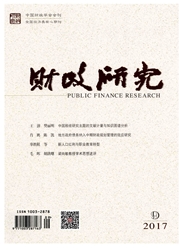

 中文摘要:
中文摘要:
精准扶贫是新时期我国扶贫开发的战略导向,是对接经济新常态要求扶贫资源优化配置和发展质量提升的政策回应。本文通过历史性分析准确把握精准扶贫生成逻辑,系统探讨精准扶贫提出的理念要求、制度关联、技术背景与政策指向,基于扶贫主体意识回归、扶贫资源供需对接、扶贫工作业务流程再造等视角剖析精准扶贫实施过程中的关键问题,并提出未来的政策走向:把握结构性贫困特征,增进精准扶贫推进需要系统思维;促进农村产权制度的改革深化,提高贫困人口资产性收益;强化贫困人口的动态管理,创新扶贫脱贫区域正向退出机制;厘清财政扶贫思路,促进财政金融政策联动;实施精准扶贫开发监测评估,重塑脱贫人口生计空间。
 英文摘要:
英文摘要:
Targeted poverty alleviation is the strategic orientation of China's poverty alleviation and development in the new period, and it is a policy response to the new normal requirements of the new economic development of the economy and the improvement of the quality of the poor. Through the historical analysis, it is accurate to grasp the logic of poverty alleviation, and systematically discusses the concept, system related, technology background and policy orientation, based on the key issues of the implementation of the poverty reduction, the supply and demand, and the business process reengineering. And put forward the future policy direction: grasp the characteristics of structural poverty, improve the accuracy of poverty alleviation and promote the reform of the system of rural property rights, improve the income of poor people, strengthen the dynamic management of poor people, innovation and poverty alleviation area forward exit mechanism, clarify finical aid ideas,promote fiscal and financial policy linkage; the implementation of accurate poverty alleviation and development monitoring assessment, reshaping the livelihood of the people out of poverty.
 同期刊论文项目
同期刊论文项目
 同项目期刊论文
同项目期刊论文
 期刊信息
期刊信息
